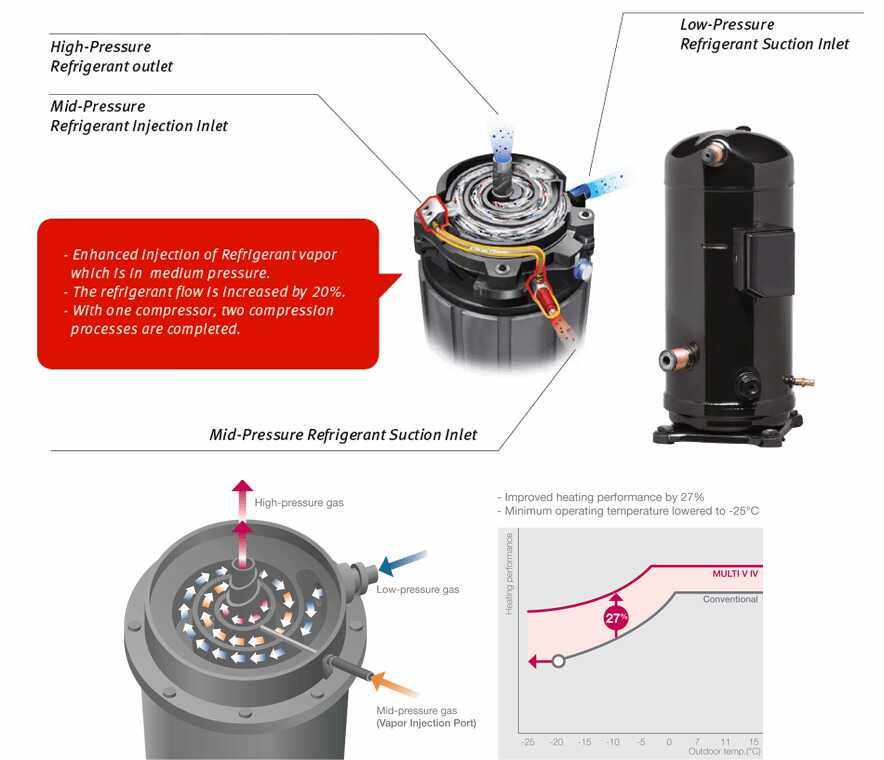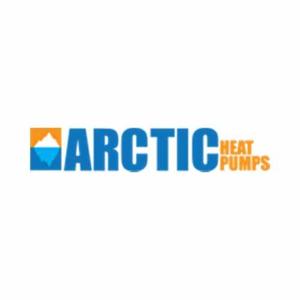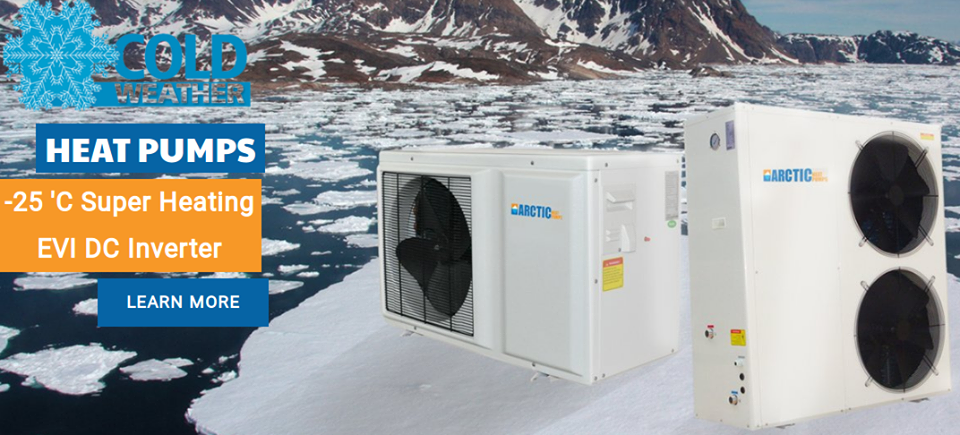Heating a home in extreme cold demands smart engineering and proven reliability. That’s where EVI (Enhanced Vapor Injection) technology takes the lead. Paired with modern inverter heat pump systems, EVI is transforming the way homes and buildings stay warm in frigid climates.

What is EVI and Why Does It Matter?
EVI, or Enhanced Vapor Injection, is a specialized method of boosting the performance of heat pumps operating in cold conditions. This process injects additional refrigerant vapor mid-compression. The result: higher refrigerant pressure, increased heat output, and consistent efficiency—even when outside temperatures plunge to -25 °C or lower.
Traditional air-source heat pumps often struggle in such temperatures. Their output drops, and so does their efficiency. EVI-equipped systems, on the other hand, continue to deliver heat effectively, making them ideal for regions with long winters.

How Inverter Heat Pumps Work with EVI
When you combine EVI with inverter technology, the system adapts to heating demands in real time. The inverter adjusts the compressor’s speed instead of switching it on and off. This keeps indoor temperatures more stable, reduces energy spikes, and extends the life of system components.
Systems like those offered by Arctic Heat Pumps use advanced DC inverter compressors from trusted manufacturers such as Panasonic. These compressors, combined with EVI, deliver a powerful yet balanced approach to cold-weather heating.
Efficiency Without the Complexity of Geothermal
EVI-based inverter heat pump systems perform well in freezing conditions without requiring the high installation cost or drilling associated with geothermal systems. They are easier to install, especially when using monobloc configurations that eliminate refrigerant piping. This makes them an excellent option for retrofits or new builds in northern climates.
Many of Arctic Heat Pumps’ models can produce warm water up to 75 °C even in subzero environments. For those needing domestic hot water or higher heating temps, systems using R134a secondary loops can push water temperatures to 85 °C—useful for radiators or snow melt systems.
Practical Applications Beyond Heating
These systems aren’t limited to heating alone. With proper configuration, an inverter heat pump with EVI can also supply cooling, domestic hot water, and even pool or spa heating. Hydronic integration allows flexibility across radiant floor systems, fan coils, and high-temp applications.
What to Consider When Choosing a System
Climate zone: Look for models rated for at least -25 °C.
Water temperature needs: Higher temp output may require secondary refrigerant loops.
System design: Incorporating buffer tanks or dual heat sources can increase efficiency.
Component quality: Choose systems with proven parts and warranties.
Conclusion
EVI technology paired with inverter compressors represents one of the most efficient and reliable heating solutions for extreme climates. With their advanced design and proven results, Arctic Heat Pumps' systems are leading the way in cold climate performance.




Write a comment ...